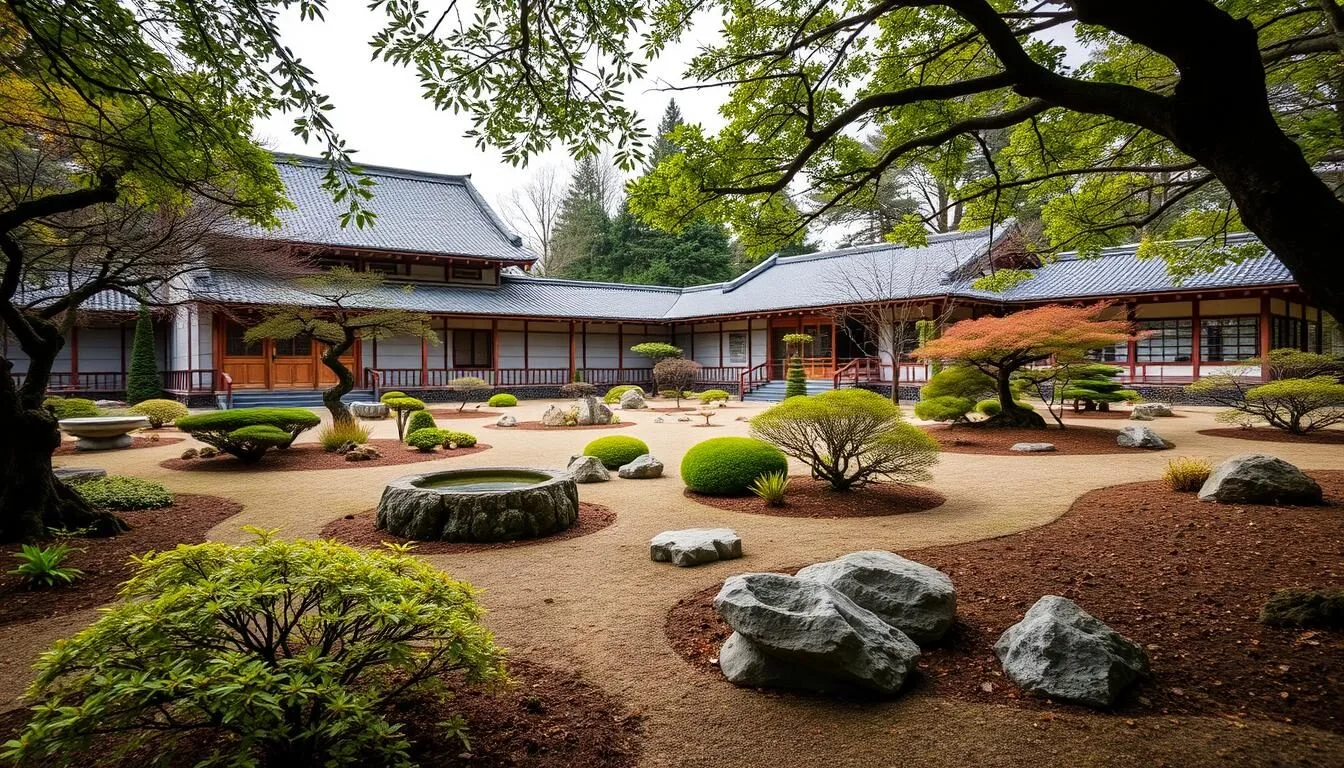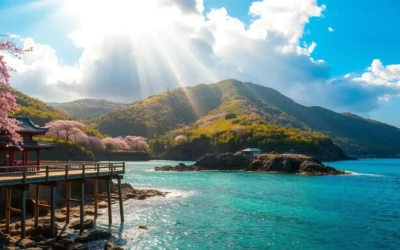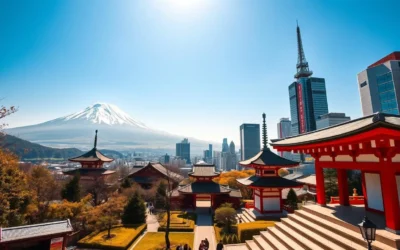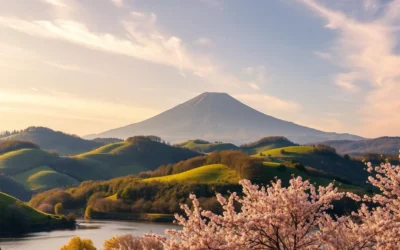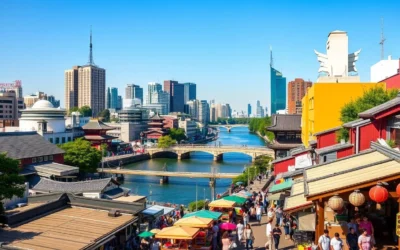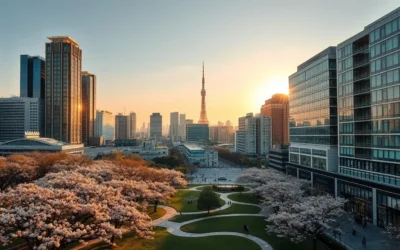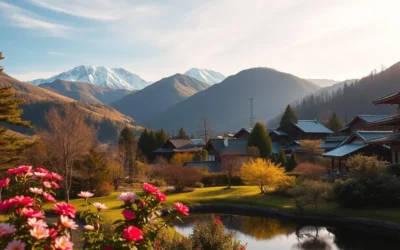Known for its vibrant culture, iconic landmarks like the Tokyo Tower, and as a global financial hub.
—
2. Yokohama, Kanagawa – Population: 3,779,000
Famous for its waterfront, historical buildings, and being Japan’s second-largest city.
—
3. Osaka, Osaka – Population: 2,752,000
Known for its modern architecture, nightlife, and historical sites like Osaka Castle.
—
4. Nagoya, Aichi – Population: 2,333,000
Famous for its automotive industry, especially Toyota, and cultural landmarks.
—
5. Sapporo, Hokkaido – Population: 1,974,000
Known for its ski resorts, winter festivals, and beer brewing history.
—
6. Fukuoka, Fukuoka – Population: 1,610,000
Famous for its food, particularly Hakata ramen, and as a major cultural hub in southern Japan.
—
7. Kobe, Hyogo – Population: 1,537,000
Known for its beef, port city, and being a major financial and trade hub.
—
8. Kawasaki, Kanagawa – Population: 1,537,000
Famous for its proximity to Tokyo, modern industrial landscape, and transportation.
—
9. Hiroshima, Hiroshima – Population: 1,194,000
Known for the Peace Memorial Park and its tragic history from the atomic bombing in WWII.
—
10. Saitama, Saitama – Population: 1,321,000
Famous for being a major residential area just north of Tokyo with modern infrastructure.
—
11. Sendai, Miyagi – Population: 1,089,000
Known for its historic sites and as a gateway to the Tohoku region in northern Japan.
—
12. Chiba, Chiba – Population: 980,000
Famous for its proximity to Tokyo, Narita Airport, and Tokyo Disneyland.
—
13. Shizuoka, Shizuoka – Population: 710,000
Known for its tea industry, Mount Fuji views, and being a major port city.
—
14. Fukuoka, Fukuoka – Population: 1,610,000
Famous for its food, particularly Hakata ramen, and as a major cultural hub in southern Japan.
—
15. Okayama, Okayama – Population: 720,000
Known for its famous Korakuen Garden and as an agricultural hub.
—
16. Niigata, Niigata – Population: 810,000
Famous for its rice production, particularly Koshihikari, and its winter snow festivals.
—
17. Hachioji, Tokyo – Population: 579,000
Known for its mountains, beautiful nature parks, and being part of the greater Tokyo area.
—
18. Kochi, Kochi – Population: 330,000
Famous for its coastal beauty, historical castle, and rich cultural heritage.
—
19. Utsunomiya, Tochigi – Population: 505,000
Known for its gyoza (dumplings) and as a major city in the Kanto region.
—
20. Shizuoka, Shizuoka – Population: 710,000
Known for its tea industry, Mount Fuji views, and being a major port city.
—
21. Okinawa, Okinawa – Population: 1,434,000
Famous for its tropical climate, beaches, and as a U.S. military base.
—
22. Kurashiki, Okayama – Population: 482,000
Famous for its preserved historic district, traditional warehouses, and canal-side architecture.
—
23. Yokosuka, Kanagawa – Population: 416,000
Known for its naval base, maritime history, and proximity to Tokyo.
—
24. Funabashi, Chiba – Population: 635,000
Famous for its shopping centers, parks, and being part of the greater Tokyo area.
—
25. Oita, Oita – Population: 479,000
Known for its hot springs (onsen) and coastal landscapes.
—
26. Gifu, Gifu – Population: 406,000
Famous for its historical sites and being the home of Gifu Castle.
—
27. Takamatsu, Kagawa – Population: 425,000
Famous for its udon noodles, beautiful Ritsurin Garden, and coastal views.
—
28. Mito, Ibaraki – Population: 426,000
Known for its historic Kairakuen Garden and as the capital of Ibaraki Prefecture.
—
29. Nagoya, Aichi – Population: 2,333,000
Famous for its automotive industry, especially Toyota, and cultural landmarks.
—
30. Akita, Akita – Population: 317,000
Known for its natural beauty, snow festivals, and rich cultural traditions.
—
31. Kitakyushu, Fukuoka – Population: 943,000
Famous for its industrial base, seaport, and as a key player in Japan’s economy.
—
32. Yamagata, Yamagata – Population: 252,000
Known for its natural beauty, including the Zao Mountain Range and hot springs.
—
33. Chigasaki, Kanagawa – Population: 234,000
Famous for its beaches and laid-back coastal atmosphere.
—
34. Kawagoe, Saitama – Population: 350,000
Known for its preserved Edo-period buildings and historical atmosphere.
—
35. Himeji, Hyogo – Population: 540,000
Famous for its historic Himeji Castle, one of Japan’s most beautiful and well-preserved castles.
—
36. Asahikawa, Hokkaido – Population: 410,000
Known for its winter sports, zoo, and natural landscapes in northern Japan.
—
37. Hamamatsu, Shizuoka – Population: 810,000
Famous for being the home of musical instrument manufacturers Yamaha and Suzuki.
—
38. Fujisawa, Kanagawa – Population: 435,000
Known for its coastal beauty and proximity to Enoshima Island.
—
39. Omiya, Saitama – Population: 337,000
Known for its large railway hub and vibrant urban life.
—
40. Chuo, Tokyo – Population: 137,000
Famous for its upscale shopping districts such as Ginza and being a major commercial area.
—
41. Sasebo, Nagasaki – Population: 254,000
Known for its naval base, beautiful harbor, and unique western influence.
—
42. Fujinomiya, Shizuoka – Population: 135,000
Famous for its proximity to Mount Fuji and its role as a gateway to the iconic peak.
—
43. Shimonoseki, Yamaguchi – Population: 290,000
Known for its seafood, especially fugu (pufferfish), and its historical importance.
—
44. Maebashi, Gunma – Population: 340,000
Known for its traditional parks, museums, and proximity to Mount Akina.
—
45. Kitami, Hokkaido – Population: 120,000
Known for its natural beauty and proximity to hot springs and forests.
—
46. Toyama, Toyama – Population: 414,000
Famous for its picturesque mountain views and being a center for heavy industry.
—
47. Urayasu, Chiba – Population: 169,000
Known for its proximity to Tokyo Disneyland and its family-friendly atmosphere.
—
48. Yokkaichi, Mie – Population: 308,000
Famous for its chemical industry and proximity to Ise Bay.
—
49. Ichikawa, Chiba – Population: 485,000
Known for its transportation connections to Tokyo and shopping districts.
—
50. Yokosuka, Kanagawa – Population: 416,000
Famous for its naval base, maritime history, and proximity to Tokyo.
—
51. Funabashi, Chiba – Population: 635,000
Famous for its shopping centers, parks, and being part of the greater Tokyo area.
—
52. Utsunomiya, Tochigi – Population: 505,000
Known for its gyoza (dumplings) and as a major city in the Kanto region.
—
53. Takatsuki, Osaka – Population: 350,000
Known for its suburban atmosphere and historical sites.
—
54. Chuo, Tokyo – Population: 137,000
Famous for its upscale shopping districts such as Ginza and being a major commercial area.
—
55. Okinawa, Okinawa – Population: 1,434,000
Famous for its tropical climate, beaches, and being a U.S. military base.
—
56. Shizuoka, Shizuoka – Population: 710,000
Known for its tea industry, Mount Fuji views, and being a major port city.
—
57. Kitakyushu, Fukuoka – Population: 943,000
Famous for its industrial base, seaport, and as a key player in Japan’s economy.
—
58. Kurashiki, Okayama – Population: 482,000
Famous for its preserved historic district, traditional warehouses, and canal-side architecture.
—
59. Oita, Oita – Population: 479,000
Known for its hot springs (onsen) and coastal landscapes.
—
60. Takamatsu, Kagawa – Population: 425,000
Famous for its udon noodles, beautiful Ritsurin Garden, and coastal views.
—
61. Gifu, Gifu – Population: 406,000
Famous for its historical sites and being the home of Gifu Castle.
—
62. Chigasaki, Kanagawa – Population: 234,000
Famous for its beaches and laid-back coastal atmosphere.
—
63. Hachioji, Tokyo – Population: 579,000
Known for its mountains, beautiful nature parks, and being part of the greater Tokyo area.
—
64. Sapporo, Hokkaido – Population: 1,974,000
Known for its ski resorts, winter festivals, and beer brewing history.
—
65. Shimonoseki, Yamaguchi – Population: 290,000
Known for its seafood, especially fugu (pufferfish), and its historical importance.
—
66. Okinawa, Okinawa – Population: 1,434,000
Famous for its tropical climate, beaches, and being a U.S. military base.
—
67. Fujisawa, Kanagawa – Population: 435,000
Known for its coastal beauty and proximity to Enoshima Island.
—
68. Gifu, Gifu – Population: 406,000
Known for its historical sites and being the home of Gifu Castle.
—
69. Urayasu, Chiba – Population: 169,000
Known for its proximity to Tokyo Disneyland and its family-friendly atmosphere.
—
70. Yokohama, Kanagawa – Population: 3,779,000
Famous for its waterfront, historical buildings, and being Japan’s second-largest city.
—
71. Shizuoka, Shizuoka – Population: 710,000
Known for its tea industry, Mount Fuji views, and being a major port city.
—
72. Asahikawa, Hokkaido – Population: 410,000
Known for its winter sports, zoo, and natural landscapes in northern Japan.
—
73. Hamamatsu, Shizuoka – Population: 810,000
Famous for being the home of musical instrument manufacturers Yamaha and Suzuki.
—
74. Fujinomiya, Shizuoka – Population: 135,000
Famous for its proximity to Mount Fuji and its role as a gateway to the iconic peak.
—
75. Sasebo, Nagasaki – Population: 254,000
Known for its naval base, beautiful harbor, and unique western influence.
—
76. Maebashi, Gunma – Population: 340,000
Known for its traditional parks, museums, and proximity to Mount Akina.
—
77. Kitami, Hokkaido – Population: 120,000
Known for its natural beauty and proximity to hot springs and forests.
—
78. Toyama, Toyama – Population: 414,000
Famous for its picturesque mountain views and being a center for heavy industry.
—
79. Omiya, Saitama – Population: 337,000
Known for its large railway hub and vibrant urban life.
—
80. Fujinomiya, Shizuoka – Population: 135,000
Famous for its proximity to Mount Fuji and its role as a gateway to the iconic peak.
—
81. Kurashiki, Okayama – Population: 482,000
Famous for its preserved historic district, traditional warehouses, and canal-side architecture.
—
82. Gifu, Gifu – Population: 406,000
Known for its historical sites and being the home of Gifu Castle.
—
83. Utsunomiya, Tochigi – Population: 505,000
Known for its gyoza (dumplings) and as a major city in the Kanto region.
—
84. Takamatsu, Kagawa – Population: 425,000
Famous for its udon noodles, beautiful Ritsurin Garden, and coastal views.
—
85. Chigasaki, Kanagawa – Population: 234,000
Famous for its beaches and laid-back coastal atmosphere.
—
86. Sasebo, Nagasaki – Population: 254,000
Known for its naval base, beautiful harbor, and unique western influence.
—
87. Hachioji, Tokyo – Population: 579,000
Known for its mountains, beautiful nature parks, and being part of the greater Tokyo area.
—
88. Shimonoseki, Yamaguchi – Population: 290,000
Known for its seafood, especially fugu (pufferfish), and its historical importance.
—
89. Yokohama, Kanagawa – Population: 3,779,000
Famous for its waterfront, historical buildings, and being Japan’s second-largest city.
—
90. Urayasu, Chiba – Population: 169,000
Known for its proximity to Tokyo Disneyland and its family-friendly atmosphere.
—
91. Kochi, Kochi – Population: 330,000
Famous for its coastal beauty, historical castle, and rich cultural heritage.
—
92. Okinawa, Okinawa – Population: 1,434,000
Famous for its tropical climate, beaches, and being a U.S. military base.
—
93. Gifu, Gifu – Population: 406,000
Known for its historical sites and being the home of Gifu Castle.
—
94. Asahikawa, Hokkaido – Population: 410,000
Known for its winter sports, zoo, and natural landscapes in northern Japan.
—
95. Hamamatsu, Shizuoka – Population: 810,000
Famous for being the home of musical instrument manufacturers Yamaha and Suzuki.
—
96. Fujinomiya, Shizuoka – Population: 135,000
Famous for its proximity to Mount Fuji and its role as a gateway to the iconic peak.
—
97. Sasebo, Nagasaki – Population: 254,000
Known for its naval base, beautiful harbor, and unique western influence.
—
98. Maebashi, Gunma – Population: 340,000
Known for its traditional parks, museums, and proximity to Mount Akina.
—
99. Kitami, Hokkaido – Population: 120,000
Known for its natural beauty and proximity to hot springs and forests.
—
100. Toyama, Toyama – Population: 414,000
Famous for its picturesque mountain views and being a center for heavy industry.
